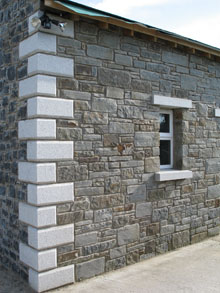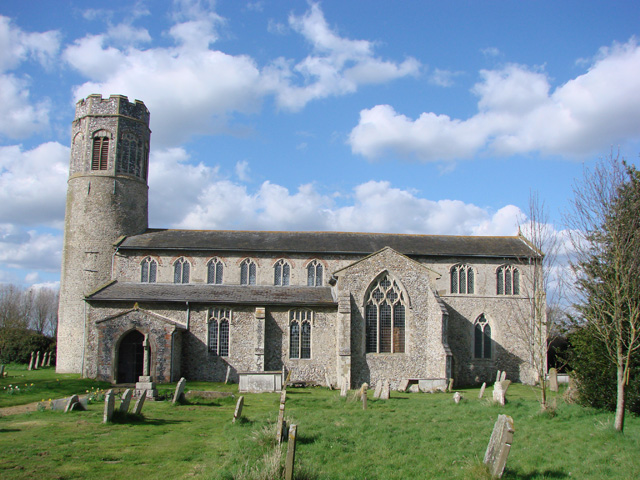Round tower churches, as the name implies, have a circular, rather than the more common square tower. Most were built between the 11th and 14th centuries, but some pre-date the Norman Conquest. They are found mainly in East Anglia; of the 186 surviving examples, including those in a ruinous or semi-ruinous condition, 131 are in Norfolk, 41 in Suffolk, 7 in Essex, 3 in Sussex and 2 each in Cambridgeshire and Berkshire.[1]
Towers were often built for defensive purposes to protect against raiders, especially near the borders with Scotland and Wales, but not those in the round tower churches of East Anglia. Flint, the only local building material available, could not be shaped into quoins
Any external angle or corner of a structure.:[2]

